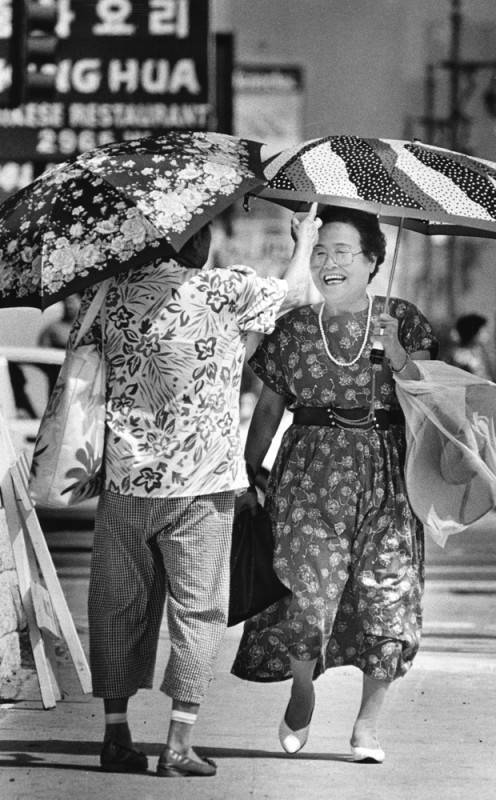Current Attitudes
This documentary discusses the major issues within the L.A. riots. It features interviews of a variety of people such as Congresswoman Maxine Waters and other civil leaders. It reflects on the riots itself and examines how society has evolved since then.
White supremacy thrives off of the tensions between marginalized communities, as seen with the events that led up to and during the L.A. Riots. The economic struggles of the Black community as a result of the 1979 recession placed them in a vulnerable state that allowed Korean immigrants to unwittingly take advantage of their misfortune and begin the tensions that would escalate into violence and hostility between the communities.
These stereotypes create caricatures of each community that allow for easy attacks that further reinforce them. These caricatures still priest along with the model minority myth today. For instance, we can see this with the 2008 controversial Vogue cover featuring Lebron James and Gisele Bundchen. This cover perpetuates racist stereotypes by potraying Lebron James as a “dangerous and violent Black man” abducting an innocent white woman, which is Gisele Bundchen. Another example of racist stereotypes is in the movie Pitch Perfect (2012) when analyzing the character Lilly Onakuramara. This character played by Hanna Mae Lee was basically inaudible and incredibly shy which perpetuates the stereotype of Asian women being docile, submissive figures. Moreover, this is compounded with the model minority myth because this adds to the narrative that Asian people are mere side pieces or just supporting characters.
In the media, Asian characters are stereotyped as overachievers who work tirelessly in order to obtain financial and educational stability. Asian Americans are labeled as the “model minority” because of white supremacist views. This racist discourse favors the Asian community as this group, historically, has been much more passive and compliant than other minority groups.
The idea of the model minority myth was used to further vilanize the Black community. It insinuates that other minority groups are lesser than or not as hardworking when compared to Asian Americans. This further contradicts any discrimination or hardship that Asian minority groups face. It suppresses the differences and complexities within the Asian community and portrays this group as a unified unit.
White supremacy relies on racial tensions and divisions to thrive. This ideology serves to perpetuate its dominance on society. By instigating tensions between various racial and ethnic groups, it deflects attention from systemic issues and actively hinders the formation of allyships across communities. With these divisions, it becomes even more difficult to challenge inequality. Moreover, racial tensions are integral to justify and continue discriminatory practices and preserve social hierarchies. We can see this happening directly in the 1992 L.A. Riots with the scapegoating of Korean American and African American communities. The manipulation of fear and anxiety is used to reinforce racial tensions to further divide these groups and make them easier to control.
People of color and marginalized groups require each other’s strength to overcome the obstacles set in place by white supremacy. We need to recognize the shared experiences of discrimination and social injustices that people of color and marginalized groups have been forced to endure in order to challenge white supremacist ideologies and pursue equity for all. Fostering solidarity and understanding is the first step in the process. We need to amplify the voices who have been silenced and foster solidarity within all groups. People from all backgrounds need to unite against these injustices to instigate action for equitable change.

